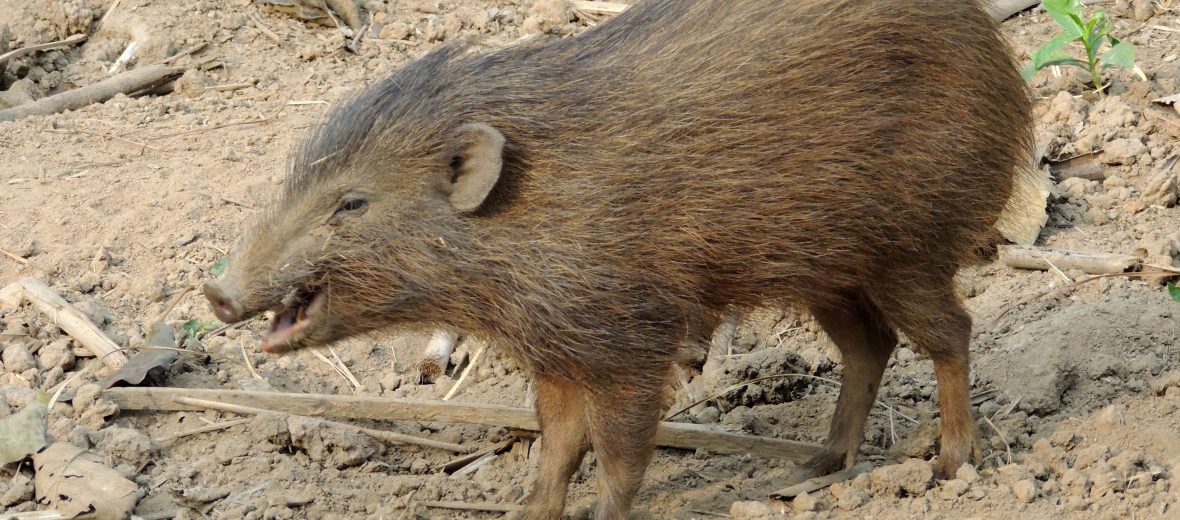
The pygmy hog hails only from southern Bhutan and Assam, in India. They prefer the tall, thick grassland habitat in the foothills of the Himalayas. Unfortunately, due to the threats of habitat loss and destruction at the hands of residential and commercial development, farming, ranching, intentional fires, fire suppression, and logging; hunting; and trapping, these tiny hogs are listed as Endangered as well as Critically Depleted by the IUCN. Their wild populations are estimated to be only 250. Their population trend is unknown.
First the Stats…
Scientific name: Porcula salvania
Weight: Up to 21 lbs.
Length: Up to 28 inches
Height: Up to 9.8 inches
Lifespan: Up to 14 years
Now on to the Facts!
1.) These critters are the rarest and also the smallest known hog species in the world.
2.) Pygmy hogs are sociable critters that dwell in small family oriented groups that consist of 2 adult females and their offspring.
3.) The males of this species are solitary and only visit the females to breed.
4.) These hogs are diurnal (active during the day).
5.) A group of hogs is called a drift, drove, herd, sounder, or team.
But wait, there’s more on the pygmy hog!
6.) Nests are dug out in the ground and lined with loose vegetation. They are used for resting during the heat of the day and for sleeping at night.
7.) Insects, rats, mice, small reptiles, roots, leaves, and tubers are all happily consumed; making these hogs omnivores (eat plant and animal matter).
Did you know…?
Besides humans poaching these tiny hogs, tigers are their only known natural predators.
8.) Breeding takes place just before the monsoons.
9.) Females undergo up to a 100 day gestation (pregnancy) that yields up to 6 piglets.
10.) The young are reproductively mature at 1 – 2 years of age.
Now a Short Pygmy Hog Video!
Be sure to share & comment below! Also, check out the Critter Science YouTube channel. Videos added regularly!
Want to suggest a critter for me to write about? Let me know here.
Some source material acquired from: Wikipedia & IUCN
Photo credit: A. J. T. Johnsingh, WWF-India and NCF



